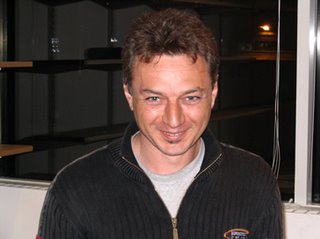Public Lecture
Speaker: Vincent Danos
Title: Rule-based Modeling of Cellular Signalling
Date: Thursday 20th September
Time: 17:00-18:00
Place: e-Science Institute, 13-15 South College Street, Edinburgh
Modelling is becoming a necessity in studying biological signalling
pathways, because the combinatorial complexity of such systems
rapidly overwhelms intuitive and qualitative forms of reasoning. Yet,
this same combinatorial explosion makes the traditional modelling
paradigm based on systems of differential equations impractical. In
contrast, agent-based or concurrent languages, such as kappa describe
biological interactions in terms of rules, thereby avoiding the
combinatorial explosion besetting differential equations. Rules are
expressed in an intuitive graphical form that transparently
represents biological knowledge. In this way, rules become a natural
unit of model building, modification, and discussion. We illustrate
this with a sizeable example obtained from refactoring two models of
EGF receptor signalling that are based on differential equations. An
exciting aspect of the agent-based approach is that it naturally
lends itself to the identification and analysis of the causal
structures that deeply shape the dynamical, and perhaps even
evolutionary, characteristics of complex distributed biological
systems. In particular, one can adapt the notions of causality and
conflict, familiar from concurrency theory, to kappa, our
representation language of choice. Using the EGF receptor model as an
example, we show how causality enables the formalization of the
colloquial concept of pathway and, perhaps more surprisingly, how
conflict can be used to dissect the signalling dynamics to obtain a
qualitative handle on the range of system behaviours. By taming the
combinatorial explosion, and exposing the causal structures and key
kinetic junctures in a model, agent- and rule-based representations
hold promise for making modelling more powerful, more perspicuous,
and of appeal to a wider audience.
Labels: danos, lecture, systems biology

